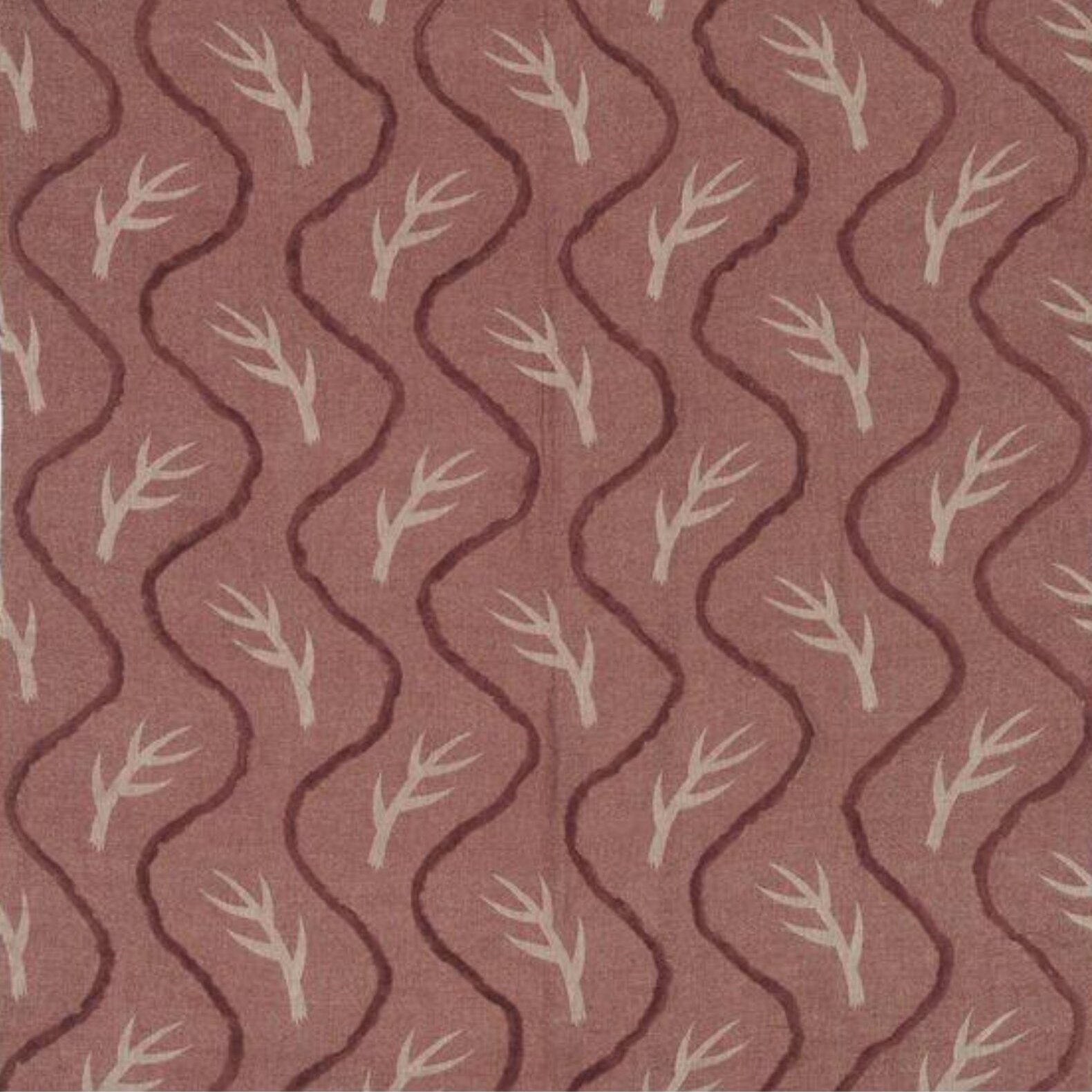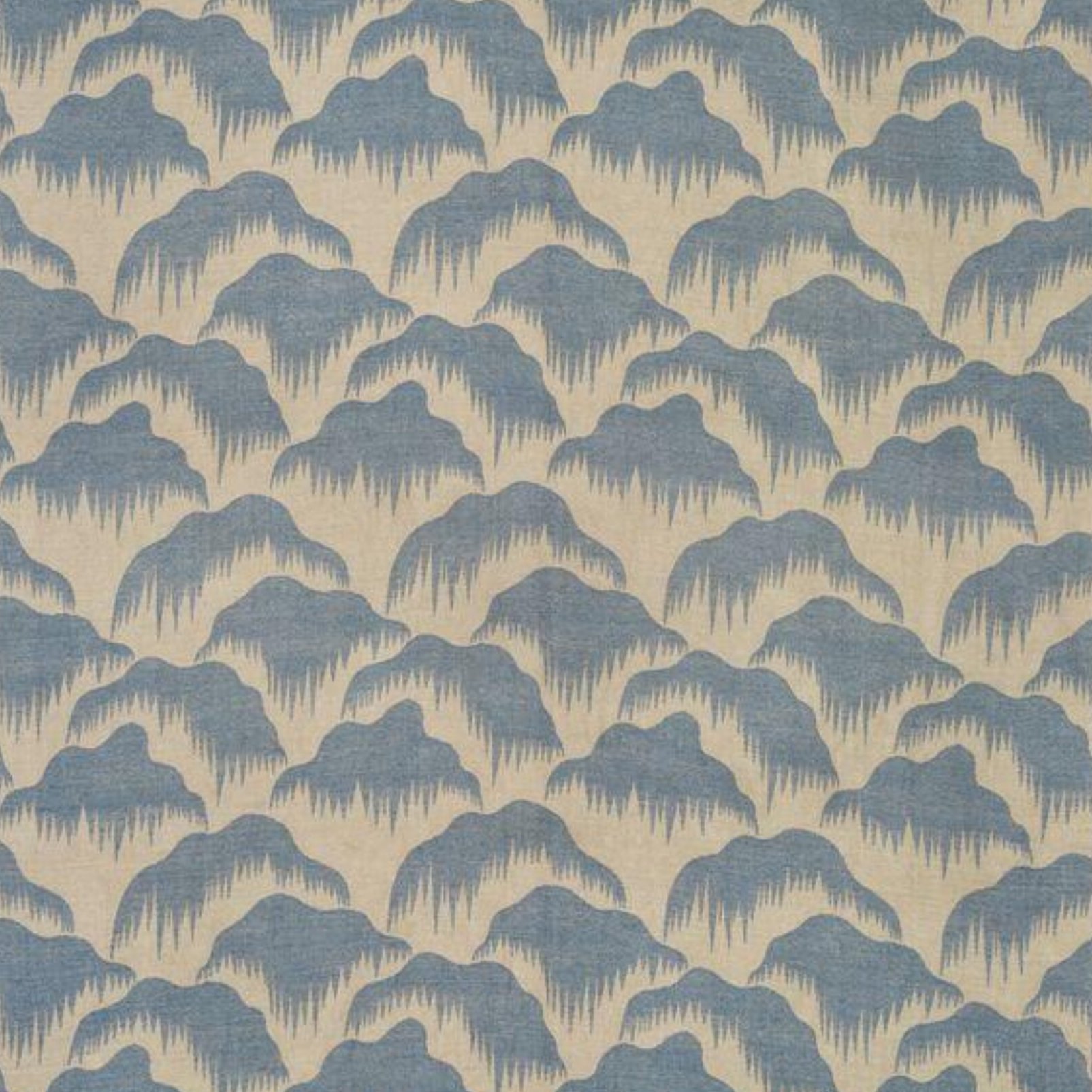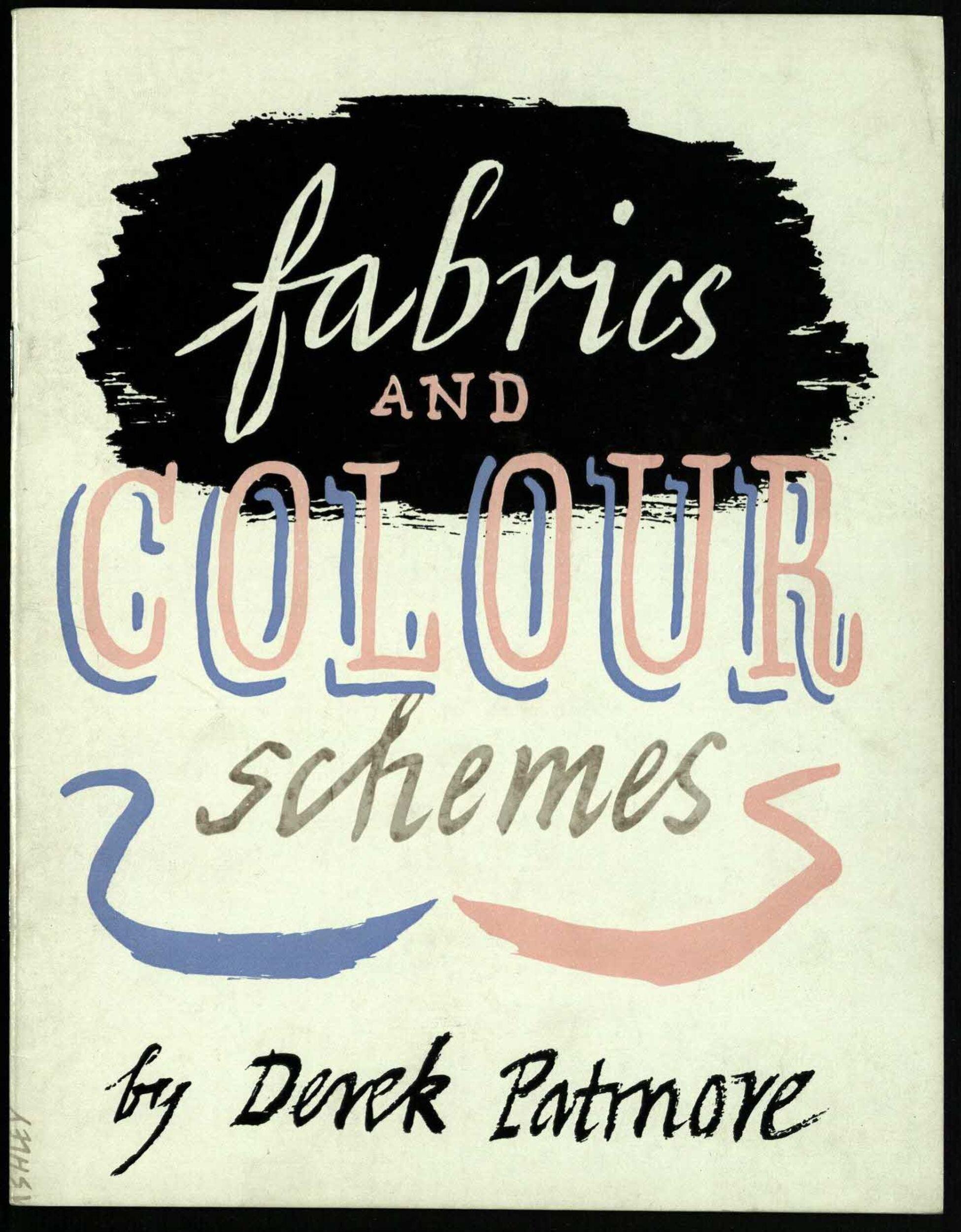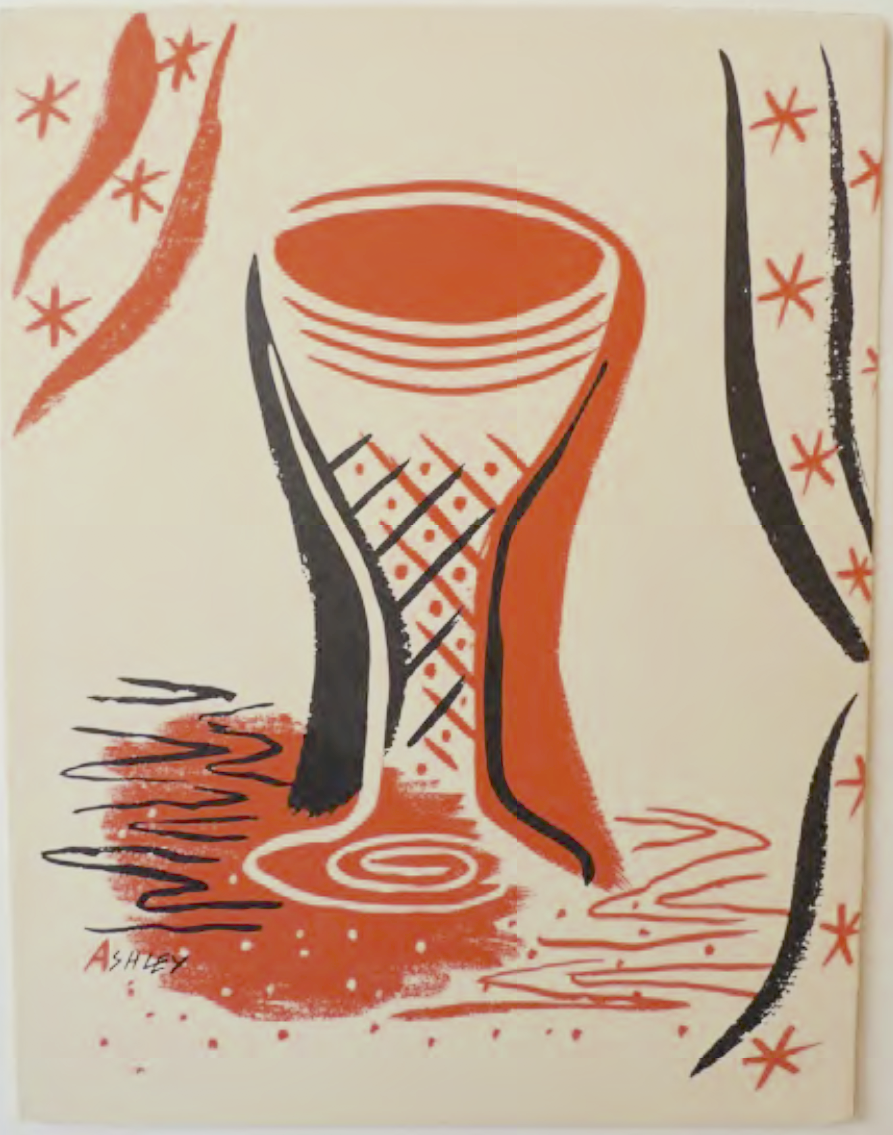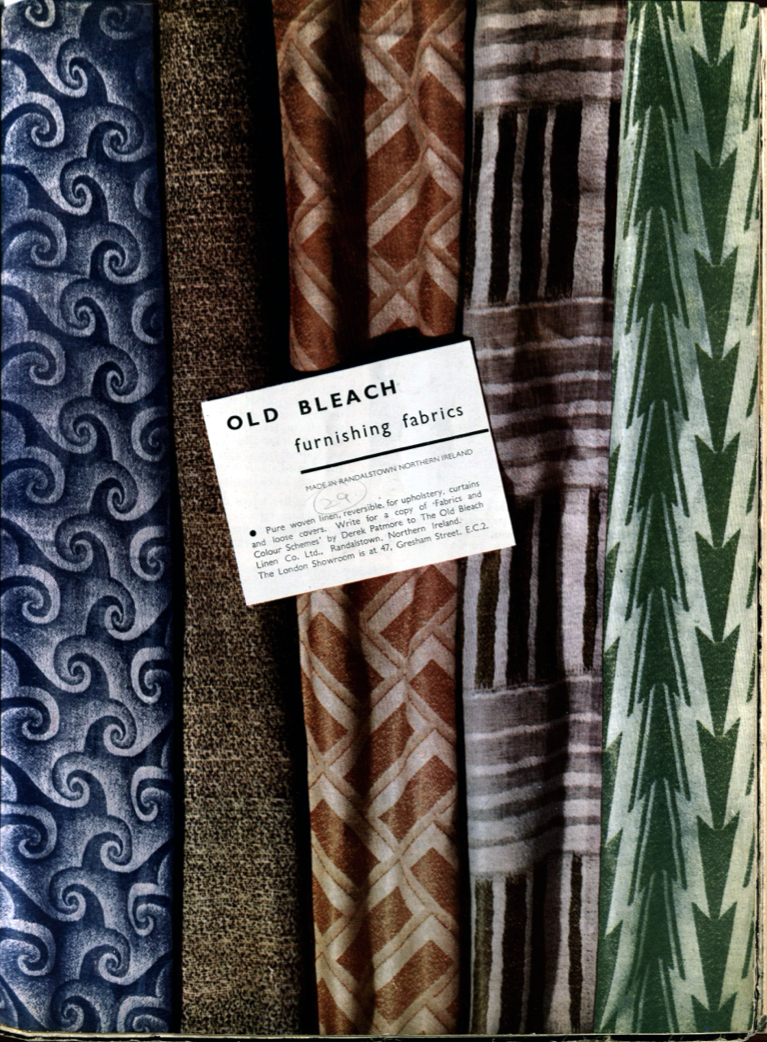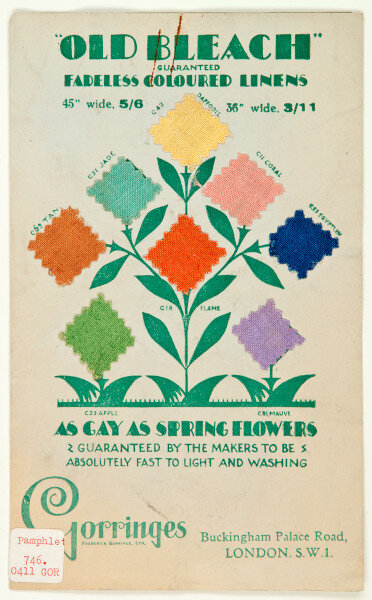OLD BLEACH LINEN COMPANY
Established by C.J. Webb in the small town of Randalstown, Northern Ireland in 1864, Old Bleach Linen Company specialised in the production of fine linens for the home and for dress fabrics. Although the firm was active for over a century, they enjoyed their hey-day from the 1930s to the 1950s, employing over 1,200 people at its height. I think the name intriguing name ‘Old Bleach’ came from their traditional method of naturally bleaching the linens out in the sun.
For decades the firm’s 'bread and butter lines’ were household linens - mainly table cloths, towels and embroidered goods in traditional styles. In a catalogue from 1900, they claimed one design to be ‘the late Queen Victoria’s favourite towel’ (!)
Mandalay, reversible linen furnishing fabric designed by Felix C. Gotto for Old Bleach Linen Co, c.1935. Image courtesy of V&A
Left: Lisburn furnishing fabric designed by Felix C. Gotto for Old Bleach Linen Co, 1930s
Right: Furnishing fabric, designer unknown, c.1936. Images courtesy of V&A.
It was in 1932 that they expanded to produce furnishing fabrics in more modish designs, as a response to changing tastes. By showcasing their work at important design exhibitions, they confidently re-situated themselves within the field of British modern design, known as ‘Industrial Art’. Branching out like this won them some notable commissions to furnish ships and hotels too; their fabric Sperrin was used on the Queen Mary and Dorn’s fabric Aircraft (pictured below) was used on the SS Orcades. (If 20th century ocean liner interiors floats your boat, I’d encourage you to take a look at this fabulous instagram account).
Aircraft, designed by Marion Dorn for Old Bleach Linen Co, 1938. Image courtesy of V&A
Up until the 1930s, British textiles were generally designed by anonymous and unsung in-house designers. The Industrial Art movement saw a shift away from this model, with many modern-leaning firms commissioning artists to design fabrics for them. The artist’s name on the selvedge endowed the fabric with status and style.
Amongst the artists commissioned by Old Bleach were Marion Dorn, Paul Nash, Ashley Havinden and Felix Gotto. They contributed bold botanicals prints, undulating curves and abstract geometrics. Felix Gotto, who was local to Randalstown, designed some of their most striking designs, which are now held by the V&A. They were one of the first firms to utilise screen printing in the early 1930s; prior to this most fabrics were roller-printed or block-printed. This new process lent itself well to more painterly designs (like in Marion Dorn’s Zodiac pictured below) and the low cost allowed manufacturers to be bold take creative risks.
Left: Promotional booklet written by Derek Patmore for Old Bleach, designed by Ashley Havinden, produced by WS Crawford, 1935. Image courtesy of V&A.
Right: Invitation to an Old Bleach ‘Fabric Party’ launch in London, designed by Havinden, 1938.
The firm clearly understood the power of marketing and enjoyed a long and fruitful partnership with the upscale London advertising agency W.S.Crawford, which was hired in 1918. The agency’s art director was Ashley Havinden, himself a textile designer and gifted graphic designer (I’ll definitely write about his work in a future post). Old Bleach held ‘fabric parties’ (sounds like my kind of party) in London and Glasgow and, according to design historian Catherine O’Hara, their visitor book from the 1930s was a “dazzling roll-call of illustrious signatories”.
Ireland is of course famous for its linen, but I think what set Old Bleach apart from their peers was their willingness to fuse tradition with modernity. They successfully preserved their age old production methods whilst taking creative risks, which injected freshness and flair into their fabrics.
Zodiac, screen printed furnishing fabric designed by Marion Dorn for Old Bleach, c.1939
Left: Old Bleach advert from Decoration magazine, 1930s, author’s own photo. Right: Old Bleach linen samples, produced by Gorringes dept store, 1930s. Image courtesy of MoDA.



